Amateur Radio also called ham radio is a unique hobby and also a useful service that brings together people, radio, and communication together.
People use ham radio to talk within the city or across the other side of the world without using any conventional means of communication like a phone or the internet.
It is a great hobby which is not only educational, entertaining but can also be a public service saving lives in times of need in an emergency.
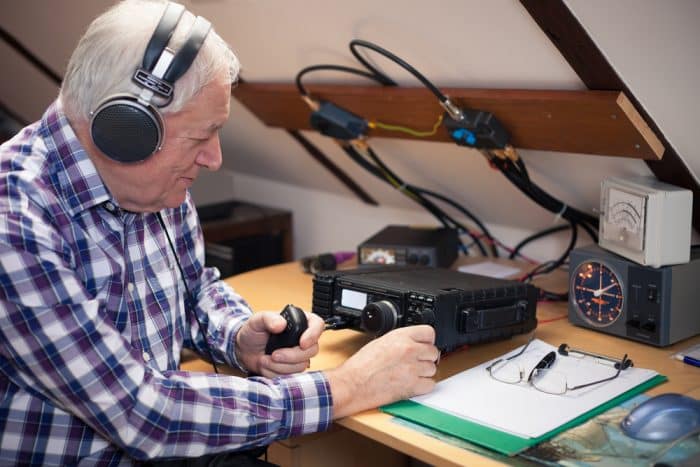
[amp-optin id=75572]
Amateur Radio Enthusiasts can be involved in this activity for many reasons. All you need is proper equipment which can be from a simple radio receiver to a complex expensive broadcast station.
You should have a basic knowledge of electronics and radio operations and you have to pass an exam to acquire an FCC license which is essential to operate a ham radio in the USA.
What Does Ham Mean?
There are plenty of theories. Some say it started as a derogatory term used by the telegraph professionals to mock those with poor Morse Code sending skills. The term Ham (fisted) implied amateurish or unskilled use of radio by them.
Nobody knows the true origin of the word ham.
However, over time the ham community owned the term and used it as a pride to call themselves as hams. Ham operators now are a big group of competent amateur radio operators spread all over the world who love their hobby and are proud of this name which was initially meant to be an insult.
Who Uses Ham Radio and Why?
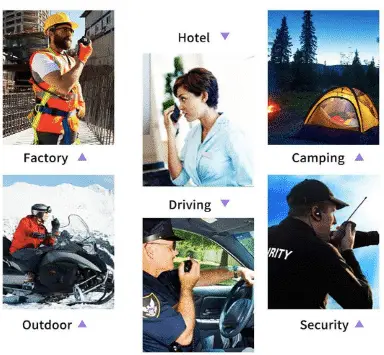
Ham radio operators come in all shapes and sizes — students, engineers, doctors, politicians, truck drivers, movie stars, missionaries, and even your average next-door neighbor.
They are of all ages, sexes, education, income levels, and nationalities.
They may be tapping a message on an old brass key, to a faraway friend, making voice calls on a hand-held radio or using a computerized base station to communicate with someone from across the globe.
Ham Radio allows you to communicate from the comfort of your den, from behind a steering wheel of your car or even from the top of a mountain. You can have mobile radios that you can take wherever you go!
However, all these gadgets and practice comes in useful in times of a disaster when the world suddenly goes quiet around you.
Maybe there is a massive power failure that shuts down all normal means of communications, your ham radio with its backup power can come into action and maybe yours is the only electronic device alive and you can communicate and coordinate any emergency efforts.
Then there are gamers, who take part in various contests locally or on a worldwide basis. They make close friends from faraway places with whom they have never met but are on a first-name basis.
Finally, there are preppers or the survivalists who have built secure bunkers almost waiting for the day the world will stop. They are fully ready with their gadgets.
There are many aspects of Ham Radio which combines many hobbies into one. Adopting ham radio as a hobby will lead you into electronics, computer hardware, software, digital communication antenna design, public service, emergency preparedness, survival techniques, etc.
Even if you just use voice communication you will learn a lot about your surroundings and have long-lasting friendships with people from near and far.
Whoever you are and for whatever the reason you want to be a ham, surely there is something for every one of you.
Why Ham is the Best Choice for Preppers and Survivalists?

If you are a prepper and a survivalist than you already know that once the world goes silent after a major disaster, you may be the only signal alive around your area and request for help and receive information about others who are in similar peril.
This makes it very important for the survivalists to get the ham radio license and equip themselves with a suitable set, practice with the relevant emergency services and get ready when the shit hits the fan (SHTF).
SHTF is an acronym of Shit Hits The Fan. It means when due to a man-made or natural activity a catastrophe occurs that creates a total loss civilization as we know off. It may on a local level or it can be even on a global scale. In all cases, it is bad for the people stuck in the middle of it.
An amateur radio operator’s ability to communicate when the electrical grid goes down puts him far ahead of the rest of the world during a long-term disaster.
It is during this catastrophe that you will need a fail-proof communication system so that you may call for help when the conventional communication systems fail.
This capability will determine the outcome of your situation. For the survivalist, communication is a key part of the overall survival strategy and plan.
The SHTF scenario assumes the loss of both cell phones and the internet. Some people just cannot imagine a world without a cell phone and internet but survivalists are ready for it. They believe they will be the only ones with critical communication capability.
What is Radio Communication?
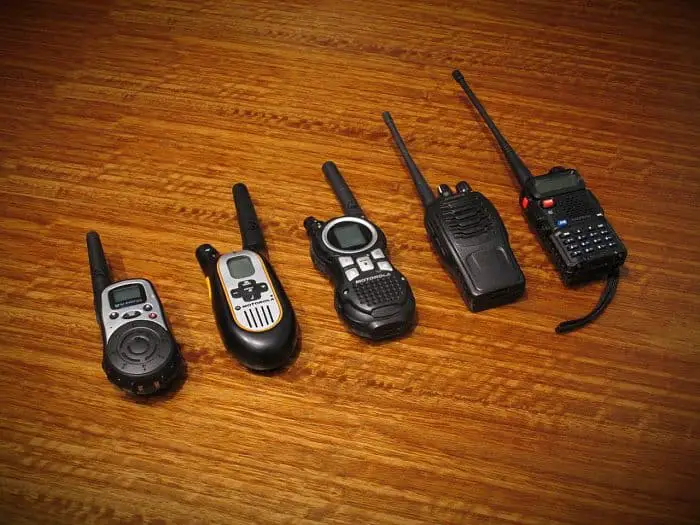
Normally a radio is a device you listen to, but it also lets you send a signal to others. The equipment that sends out a radio wave is known as a transmitter; and the device that receives it is called the receiver. In the case of ham, it is invariably the same device that allows reception and transmission and it is called a transceiver.
Radio Spectrum – Some Theory of Radio
Electromagnetic radiations are generated when charged particle such as an electron is accelerated in an electric field. This movement of the electrically charged particle generates electromagnetic fields which move in a bundle as radiation. This bundle of radiation is called a photon and it moves with the speed of light – 186,282 miles per second.
The electromagnetic spectrum spans a broad range of frequencies which includes radio waves, infrared waves, light waves, ultra-violet waves, microwaves, x-rays, and gamma rays.
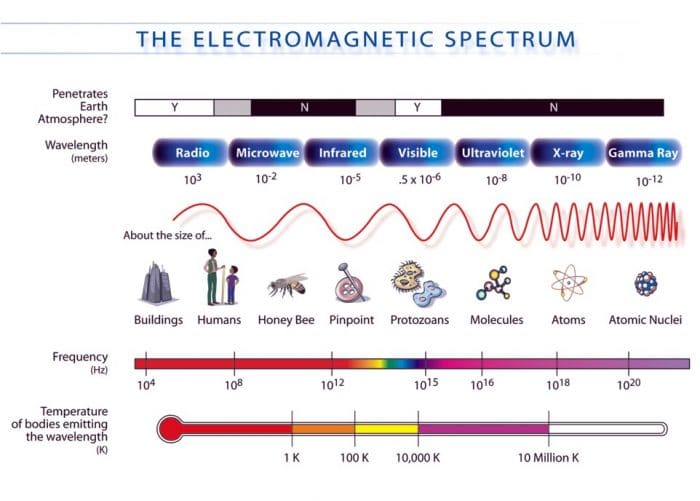
A particular band in this spectrum is called the radio waves. Radio Waves are electromagnetic energy moving at the speed of light with a wavelength, and a frequency.
If the message signal is added to the carrier by a radio transmitter in such a way so that the total signal causes fluctuations in the carrier’s frequency then it is named as Frequency Modulation (FM). On the other hand, if the frequency of a carrier radio signal is fixed but its amplitude changed by the signal then it is called Amplitude Modulation (AM).
The carrier radio waves along with signals are dissipated from the transmitter antennas. These radio waves can travels vast distances until they are intercepted by the antenna of the radio receiver.
The electronic circuitry in the radio receiver converts back the signal into comprehensible voice or data information. This process is the reverse of modulation, so it’s called demodulation.
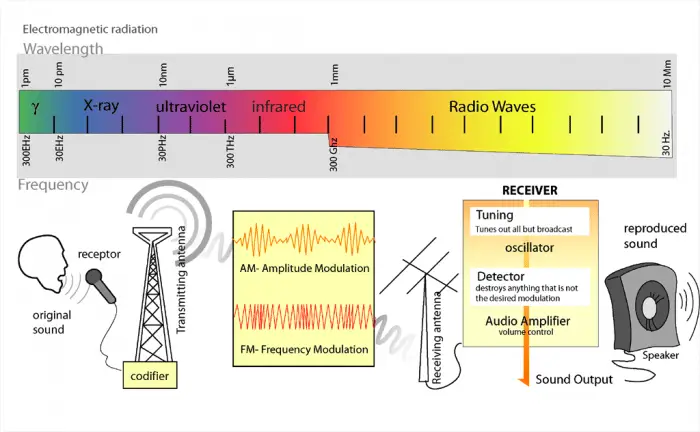
Blocks of frequencies in the radio spectrum are reserved for satellites, emergency services, military, commercial aircraft, commercial radio stations, mobile phones, and so on.
FM radio stations you listen to in the car are between 88 MHz and 108 Mz. AM radio stations broadcast on frequencies between 540 and 1600 kHz. This frequency allocation is made by the Federal Communications Commission (FCC).
What are the Radio Frequencies?
Frequency means how often something happens in a specific time window. We listen to slow music which is around 60 beats/second whereas fast music may be played at over 120 beats/ minute. The frequency of radio waves is typically listed in kHz or MHz.
What is the Wavelength?
A Wavelength is a physical length from one peak to the next peak of a wave. Wavelength and frequency are in an inverse relationship. The higher the frequency, the lower is the wavelength.
Frequency Allocation
What do HF, VHF, and UHF Mean?
High Frequency (HF), Very High Frequency (VHF), and Ultra High Frequency (UHF) are names of different sections of the radio spectrum.
- High Frequency (HF) is 3-30 MHz
- Very High Frequency (VHF) is 30-300 MHz
- Ultra-High Frequency (UHF) is 300 MHz to 3 GHz
There are of course other sections like Low Frequency, but you don’t hear much about them because they are not used for civilian radio.
What are Radio Bands?
These are blocks of radio frequencies from the radio spectrum grouped as bands or blocks. They may be referred by their frequency say 15 MHz or wavelength 25-meter band.
There are 27 amateur radio bands. These are the most popular:
| Range | Band (Meter) | MHz |
| HF | 80 | 3.5 – 4.0 |
| HF | 40 | 7.0 – 7.3 |
| HF | 30 | 10.1 – 10.15 |
| HF | 20 | 14.0 – 14.350 |
| HF | 17 | 18.068 – 18.168 |
| HF | 15 | 21.0 – 21.450 |
| HF | 12 | 24.890 – 24.990 |
| HF | 10 | 28.0 – 29.70 |
| VHF | 6 | 50 – 54 |
| VHF | 2 | 144 – 148 |
| UHF | 70cm | 430 – 440 |
What are Radio Channels?
Radio Channels are easier to remember as the address of radio signals. To avoid remembering the long decimal number of a frequency of a radio signal they are given Channel Numbers. So Channel 19 on CB radio will always be 27.185 MHz. This is much easier to remember.
Digital Radio
Apart from the analog system, there is also digital radio, which sends voice, music, and data through the air as strings of numbers. Digital Signal is much less prone to noise and can deliver a clear message even in adverse conditions.
Base Station
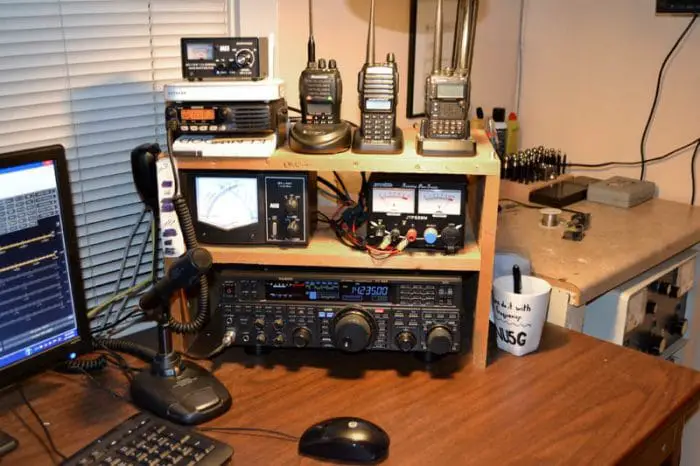
Radios for base stations are available in many different price ranges because of the great differences in performance and features. High-performance receivers have better selectivity and strong-signal performance. It is normally best to start with a basic radio and develop a feel for it and then later go on for a high-performance unit.
Mobile Units
Mobile radios are designed to be used from a moving vehicle. They are powered by the vehicle’s electrical power system and therefore are designed to consume less power as compared to base stations. This characteristic makes them useful to be used as a fixed base radio allowing them to be powered by a battery when power mains are not available in an emergency scenario.
Portable Radios

Portable radios are designed to be compact, lightweight, and power-efficient. They are available with power outputs of 5 to 100 watts and cover all of the HF bands—some operate on VHF and UHF bands. Low-power models may have an internal battery pack. Most portable radios have limited features but their portability is their main strength.
Modes of Operation
- Simplex
In simplex transmission mode, the communication between the sender and receiver occurs in only one direction. The sender can only send the information, and the receiver can only receive the information. The receiver cannot reply to the sender.
- Half Duplex
A much more useful type of communication is the half-duplex in which communication can be initiated and sent from both sides. However, there is a limitation that at any one time only one party is allowed to send information. A common example is a walkie-talkie in which only one party can speak at one time and both cannot speak simultaneously.
- Full Duplex
However, in the full-duplex, both parties can send and receive signals simultaneously. This means, that when one party sends its signals, the other party will receive it. During the reception, the second party can simultaneously send its signal, which will be received by the first party.
Extend your Range with Repeaters

Although the ham service has more range as compared to FRS units, the 2m and 70 cm bands which are available to a technician level ham licensee is limited to a power which only enables line of sight communication, this means that a hand-held ham will have a range of 1-2 miles only.
Receive a signal from someone nearby and rebroadcast it into the greater network by a repeater station, usually with more power and clarity, so it can travel farther.
Repeaters are usually on top of a tall building or hill, with high-quality equipment and antennas. They’re freely available for public use. Repeaters are often set up and maintained by local hams who volunteer their time and money.
If your signal bounces off of just one repeater, the range can get up to 50 miles. With a strong network of repeaters, the transmission could be daisy-chained to span the entire country.
Since repeaters are powered by normal grid connections, they may not be available in a power black-out. Therefore in the SHFT scenario, you cannot depend on repeaters to provide an extra range for your ham units.
Therefore preppers need to get the General ham license and use the longer-wavelength HF bands equipment that can let you communicate long distances without repeaters.
Setting up a Ham Shack
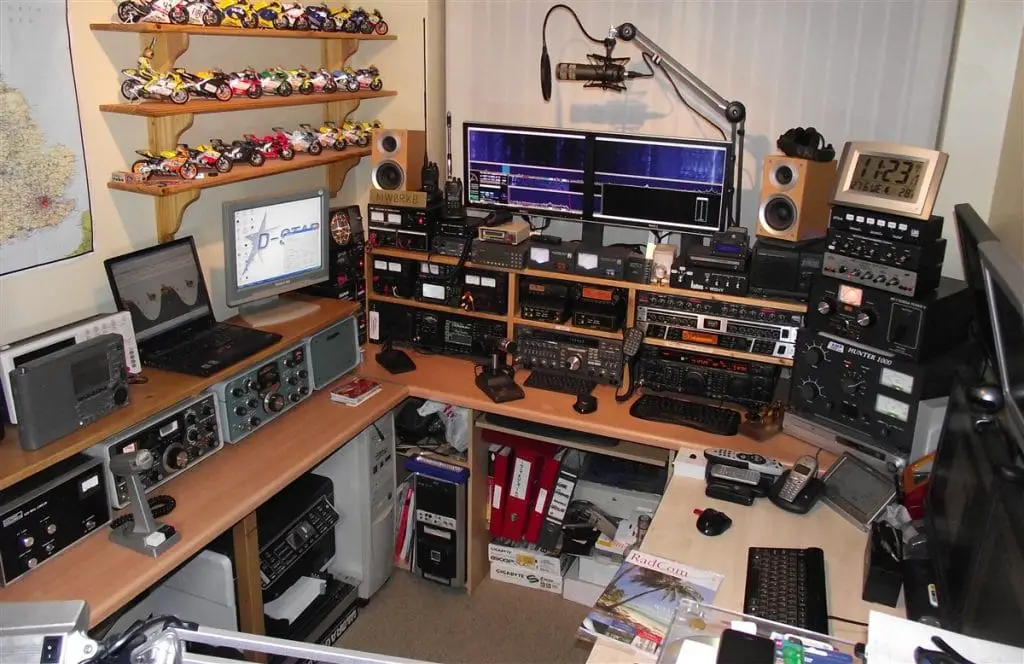
From the early days, the radio room on a ship or an amateur radio room in his home is called a radio shack. This term ‘shack’ is still used lovingly by the ham enthusiasts till today.
Your typical amateur radio shack may have a variety of equipment including transmitters, receivers, and other auxiliary equipment. Beginner hams have a small neat shack containing a small amount of equipment so that they can fit in a cupboard or a corner of a room. Serious hams keep large sophisticated equipment and usually dedicate an entire room for this purpose.
Wherever the radio shack is located, it is useful to remember the following points:
- Radio equipment needs stable and sufficient power. Invariably some provision of power backup systems should be provided.
- Antennas are an important part of the equipment and there should be some suitable space for their placement and access.
- The shack should have some temperature control as the electronic equipment does not like extremes of temperature.
- Security concerns are very important now and this should be considered if the shack is located outside the main house.
- The comfort of the operator is very important, as most amateur hams spend hours working with their radios in the shack.
Give careful thought in planning the radio shack before you put in the equipment. By thinking through these and any other relevant points, it is possible to choose a convenient location for the amateur radio shack. In this way, the hobby of amateur radio can give you a lot of pleasure, enjoyment and provide you a means to communicate to the outside world, in case of an emergency.
Various Types of Civilian Radio Bands and their Ranges
In the USA, FCC allows civilian radio communication for short-range, low-power radio devices. These include one-way and two-way voice and data services. It also allows remote control transmissions to operate wireless equipment.
FCC specifies things like the amount of power that can be used to transmit a signal, restrictions on equipment, antennas, and whether you can use repeaters and it also allocates frequencies.
The radio services allowed by FC for the general public are Family Radio Service (FRS), Citizens Band Radio (CB), Multi-Use Radio Service (MURS), General Mobile Radio Service(GMRS), and the ham radio. Of these types of services, only GMRS and ham radio require an FCC license.
Citizens Band (CB)
26 – 27 MHz (HF), 11-meter band, 40 channels.
Power is limited to 4 watts on AM signal but 12 watts are allowed if using single sideband. It is mostly used by truckers and off-road club members. No license is required to operate it. CB service allows two-way radio communications.
No CB channel is assigned to anyone as they are shared by all. To avoid crowding, users are directed not to use the channel for more than 5 minutes and again wait for 1 minute before initiating another conversation.
Family Radio Service (FRS)
462 – 467 MHz (UHF), 22 channels
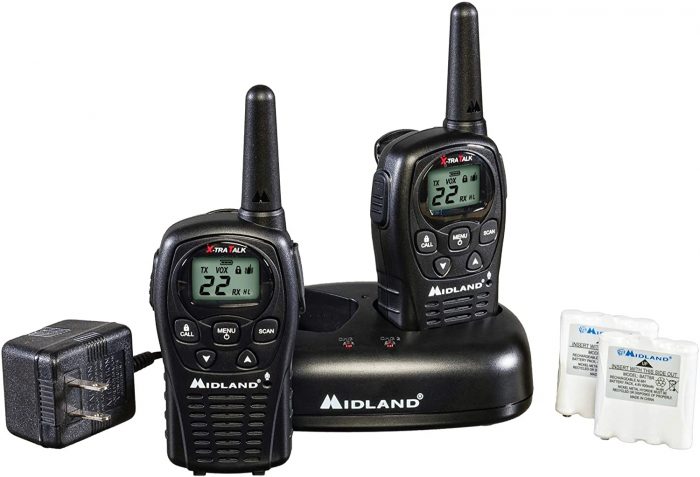 FRS is allowed two-way voice communications over a range of half a mile on 0.5-watt power and up to miles on 2 watts power. It is mainly used by walkie-talkies by home users and families for personal use.
FRS is allowed two-way voice communications over a range of half a mile on 0.5-watt power and up to miles on 2 watts power. It is mainly used by walkie-talkies by home users and families for personal use.
General Mobile Radio Service (GMRS)
462 – 467 MHz (UHF), 22 channels
GMRS is the business equivalent of FRS. It is used by farmers and business people working in the same area. You need a license to operate GMRS. GMRS can operate with up to 50 watts of power and FCC allows the use of radio repeaters with GMRS.
Multi-Use Radio Service (MURS)
M151 – 154 MHz (VHF), 5 channels
MURS is a private, two-way short-distance voice or data radio communications service. This is not commonly used although no license is required to operate it. You can go up to 2 watts of power.
Ham Radio
1.8 – 1300 MHz with gaps in between.
Hams are allowed a wide range of frequencies on the radio spectrum by the FCC. Base stations can have power up to 1,500 watts.
Handheld ham radio can have a power of 5-8 watts. Hams may operate from just above the AM broadcast band to the microwave region, in the GHz range.
Many ham bands are found in the frequency range that goes from above the AM radio band (1.6 MHz) to just above the citizen’s band (27 MHz).
During daylight, 15 to 27 MHz is a good band for long-distance communications. At night, the band from 1.6 to 15 MHz is good for long-distance communications. Ham is strictly for non-commercial use.
Do You Need A License to Operate a Ham Radio and Why?
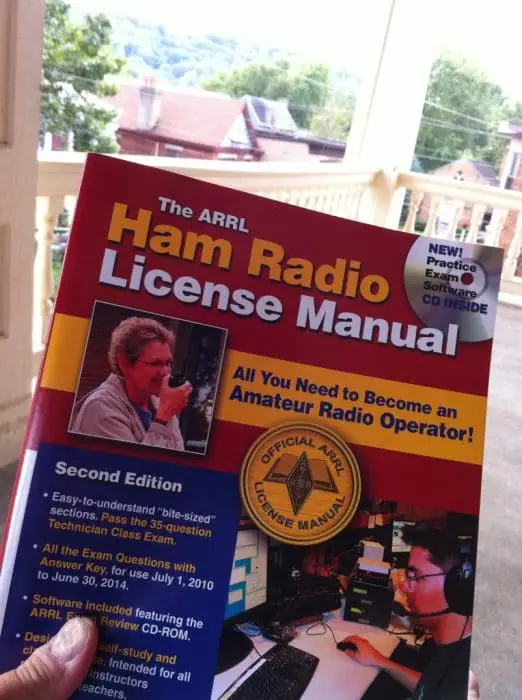
Radio waves are controlled by almost every country on the globe, and all countries have rules and licenses. There are many frequencies and bands in which you can operate without a license. However, Ham and GMRS require an FCC license.
As a ham, you are allocated a lot of band space and a lot of power. You are also representing your country on the air, as ham radios can be heard all over the world. So you have to act responsibly, run a clean station, and ensure that you do not cause any interference to other hams.
Hams have 10 bands in the HF (Short wave) region, which allows sufficient space for thousands of hams to operate without interference to each other. Additionally, you have two VHF bands, many UHF bands, and also microwave bands, which gives you more than enough space to operate easily and safely.
As a ham, you are allowed to use up to 1500 watts of power, though in practice you should only use what is necessary to when you initiate and establish communication. Once you have established the link you may reduce the power.
Can You Listen In on Ham Radio Stations Without a License?
You need a license to generate and transmit ham radio signals, but you don’t need a license to receive or listen to ham radio. All you need is a radio capable of receiving the signal. Some states forbid portable scanners for police frequencies— they’re illegal. Around the world, different counties have their own laws regarding receiving and sending radio signals.
What Happens if you Operate a Ham Radio Without a License?
FCC mandates that you must identify yourself when initiating contact and thereafter every 10 minutes during transmission, using your call sign. Before signing off you must again use your call sign. If you do not follow this practice then you will be reported by other hams and severe penalties will be imposed on you.
How to Get the License?
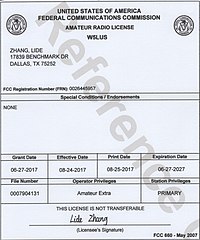
In the USA, the FCC grants the licenses, although it no longer administers amateur radio licensing examinations. The ham radio license exams are given by Volunteer Examiners (VEs). VEs then file the results with the FCC. This process enables you to get your license quickly.
A Volunteer Examiner Coordinator (VEC) organization takes responsibility for certifying and coordinating the Volunteer Examiners (VEs) who run the license exam sessions.
It also processes FCC-required paperwork generated by the VEs. Each VEC maintains a list of VEs, upcoming test sessions, and other resources for ham test-takers. It can also help you renew your license and change your address etc.
The License Exams
Three classes of ham licenses are issued by FCC and each has a separate written exam with increasing complexity and depth. The topics covered in the exam are Responsibilities of a ham operator, operator’s duties, operating practices, basic electronics and radio technologies, station set up procedures, emergency public service communications and FCC regulations. Morse code is no longer part of the exams.
- Technician (Basic)
This license is for those just getting started with their ham radio hobby. If you’re only interested in talking around town, you only need the Technician class license. The technician test includes basic questions about electronics, regulations, and safety. This license will allow you to operate on the VHF, UHF, and microwave frequencies.
- General (Advanced)
With the General license, you’ll unlock all of the privileges of the Technician license plus the ability to communicate on frequencies in the High Frequency (HF) band. If you’re interested in emergency communications, you should have a General class license.
While many emergency communications are local, that is not always the case. In a real emergency, FCC rules allow you to communicate distress calls in any way technically possible.
To be prepared for an emergency, you need to practice, and for that, you need a license. However, HF communications require a lot of practice to master it.
- Extra
The Extra license requires some serious in-depth studying. If you pass this test, you’ll get all of the privileges of the Technician and General License plus access to exclusive sub-bands. It will allow you to use all frequencies available to hams.
This includes the relatively free bands especially the extra bands for DX. You can get a shorter call sign, which can be a big advantage in a contest or working a pileup. And you can transmit up to a maximum of 1500 watts.
How to Prepare For the Test?
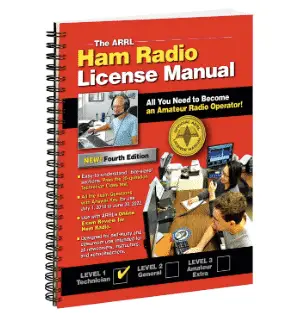
There are so many resources available to you to prepare for the test. Both on-line and in book form. Just google ham test and you will get a full list of useful sites.
Once you know your stuff, you’ll want to look for a local club in your area for a testing session.
The website of the National Association for Amateur Radio (ARRL) has a lot of information related to the test and testing locations near you.
The first thing you need to know is which exam you need to take. You can prepare and take a practice test online from various websites.
Call Sign
Every licensed radio amateur is issued one by their country’s radio authority as a unique identifier. This is a string of letters and numbers that uniquely identifies you in the ham world. In the USA, FCC issues your call sign.
Fees & Validity
The exam fee is set by the VEC and is usually $15 or less. The license is valid for 10 years
When You Want to Build, Not Buy
Communicating with ham radio is an excellent activity and a life long hobby on this own but it also provides you the opportunity to dive into the world of radio and electronics.
If electronics is your thing then you should plan to build your own ham set. There are many kits available in the specialty hobby stores or you can build one from scratch. There are plenty of resources available on the net and there are many hobby clubs that you can join.
Buying a Ham Radio
Radios take at least half of a ham’s budget or even more. The radio is the central part of a ham radio hobby! Choosing the right radio for the job is crucial. Join a radio club, or get help from an Elmer ( an expert who knows a lot about ham radio). You can look at other resources, such as the ARRL website, which can help you make the selection process a little easier.
HF or shortwave radios operate on the HF bands, which are under 30 MHz. All current HF radios are perfectly acceptable in transmitting and receiving on the HF bands. The differences among them come from additional features, such as filtering, ability to operate among other strong signals, number of memories, and more.
Basic HF radios are great for novice hams as they are relatively simple to use. While they connect only to one antenna and have limited displays and controls, they also make a great second or portable radio after a ham upgrades to a better main radio. Complex HF radios have more memory, displays, and controls.
They may also be enabled for digital transmissions and can be hooked up to a computer. High-performance HF radios usually allow for antenna switching, have excellent receivers, have extended and configurable controls, and are digital and computer ready.
Filters are an essential consideration when choosing a radio. Filters allow for full use of the desired radio signal while reducing the strength of other strong signals in the area. Without a good filter, radio operation is difficult. Consider purchasing the best filter your budget can afford for a more enjoyable ham experience.
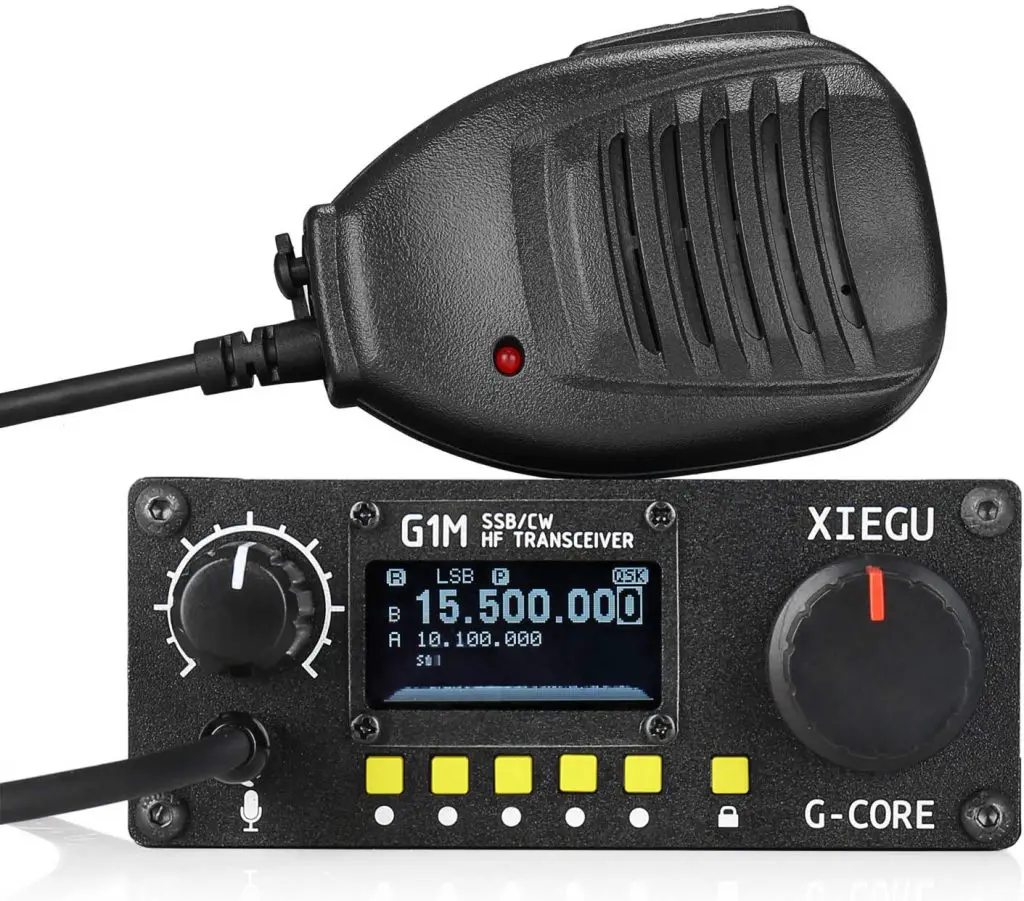
Portable HF radios are also increasing in popularity because of their relatively small size and ability to be on the go. While these radios are more difficult to use because of their size and may not have as high a quality as their stationary counterparts, but they have their own special features, such as detachable front panels that allow the body to be installed in a vehicle easily.
Some HF radios have digital capabilities. If digital transmitting is important to you, then there are accessory sockets that can make the radio able to handle different types of digital transmissions, and some even have internal modems to connect directly to a computer. A digital-enabled radio should be able to handle RTTY, packet, and other digital communications.
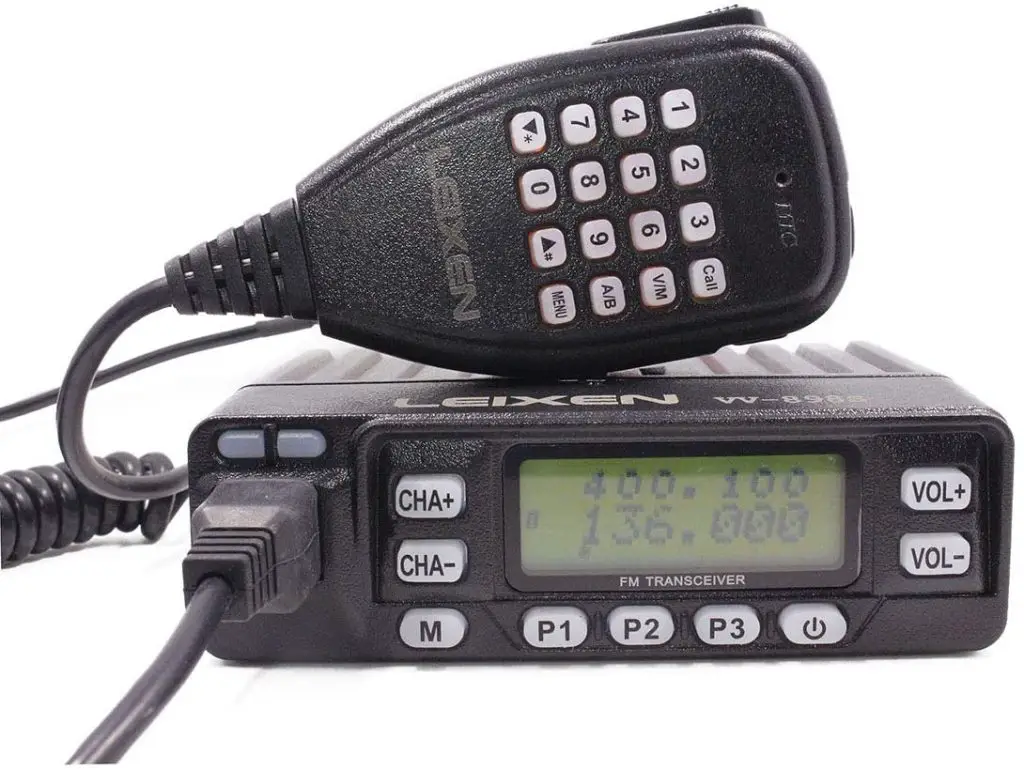
VHF/UHF radios are becoming less popular in recent years as many HF radios include VHF/UHF bands, some up to 1200 MHz. However, VHF/UHF radios can offer their unique features, such as the ability to easily use satellites for transmissions.
Some VHF/UHF radios are even GPS enabled to make using the Automatic Position Reporting System (APRS) even easier.
Radio Accessories
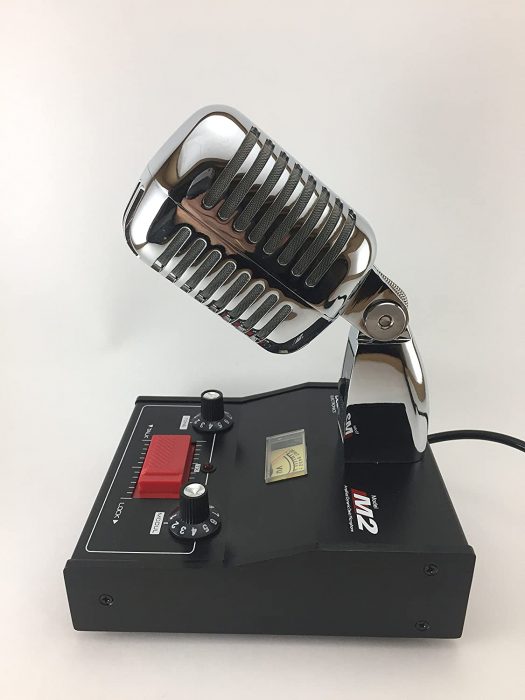
Microphones are essential to radio operation. Most radios come with hand microphones that are quite sufficient for most hams’ needs, but some hams wish to upgrade to a better quality microphone after a while.
Some hams prefer to use a headset that combines headphones with a boom microphone positioned in front of the ham’s mouth. Some microphones are designed to work with higher frequencies, which can deal effectively with noise, and others still have frequency adjusters built-in.
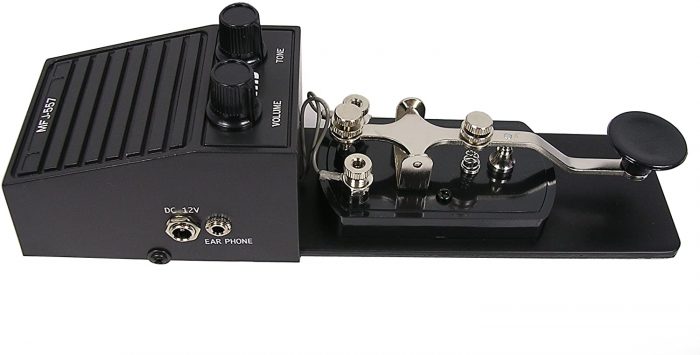
Another accessory to consider is a Morse key. This is essential for any ham who wishes to get involved in Morse code as it’s the physical device that sends the code. There are straight and electronic keys, and there are thousands of models to choose from.
External antenna tuners are an accessory that can assist if the antenna is being pushed to its limits. Internal tuners, which come with radios, can only usually handle transmissions that the antenna was designed optimally for.
By carefully planning for your needs before making any equipment purchases, you can get the biggest bang for your buck choosing equipment that has the right features for you and avoids wasting money on other options that you will never use.
Antenna Selection
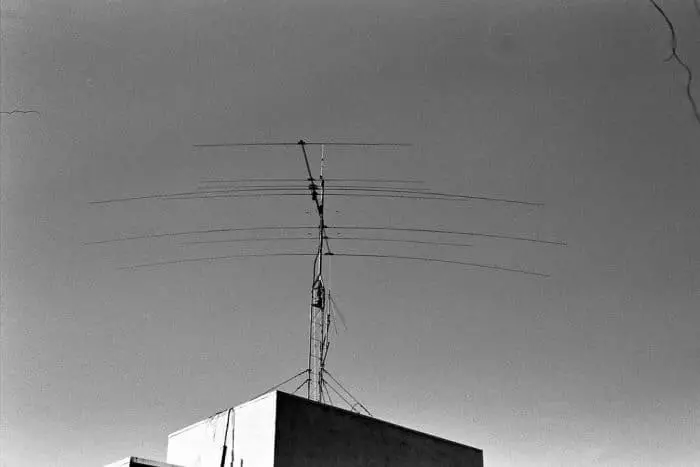
Selecting the right radio for your shack is a great start, but it’s only half the battle. Your radio can only work as well as its antenna, so carefully choosing an antenna will ensure a wise return on investment. Most HF antennas are large and can be up to 33 feet tall or higher!
The higher the HF frequency, the less height in the antenna is required, so that is often part of the decision-making process. Also, the space constraints for the antenna and even zoning ordinances can affect the size of the antenna that you can have.
While you can purchase almost any antenna type from the market many hams make their own antennas. Indeed simple wire, dipole or HF antennas are easy to build plus it gives you greater control over your design.
Hams can research the instructions or speak to Elmers about how to make a wire antenna. Simply put, a wire antenna is a wire that is cut in the middle where it attaches to a feedline. The feedline runs from the antenna to the transmitter. Wire antennas maintain a fixed orientation.
Another popular HF antenna is the vertical antenna. These are lower to the ground than wire antennas and are more portable.
Depending on the wavelength, some vertical antennas require a ground screen, which is simply a series of wires that radiate from the base of the antenna and lay on the ground. Unlike wire antennas, verticals are omnidirectional, radiating in all directions simultaneously.
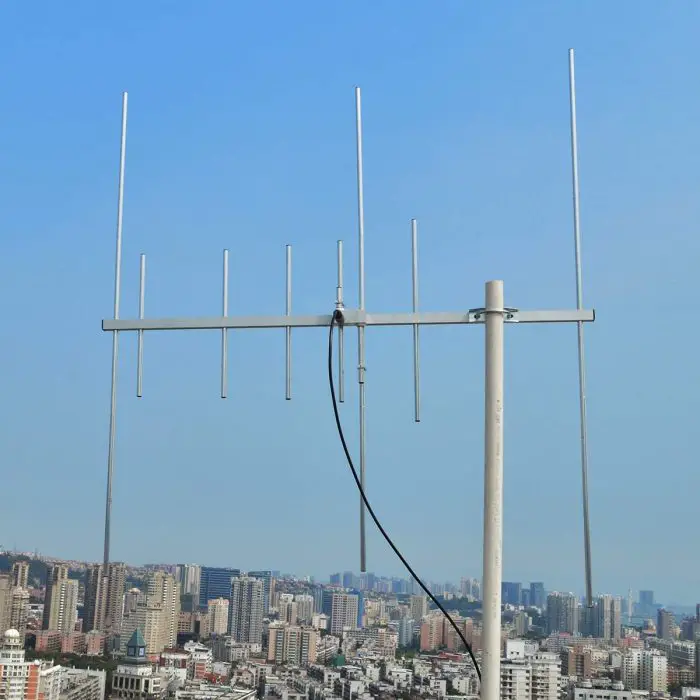
The third type of HF antenna is the beam antenna. Beam antennas have several elements that reflect and direct energy in specific directions. These antennas come in multiple shapes and sizes with a few wires or a whole series of tubing. Most beam antennas can turn or rotate to focus on particular signals or reject others. This does require a motorized rotator to be installed with the antenna.
For VHF/UHF transmissions, verticals or beams are most common. Verticals are almost the exclusive choice for FM operation, and beams are quite common for VHF/UHF DX-ing on SBB and CW signals.
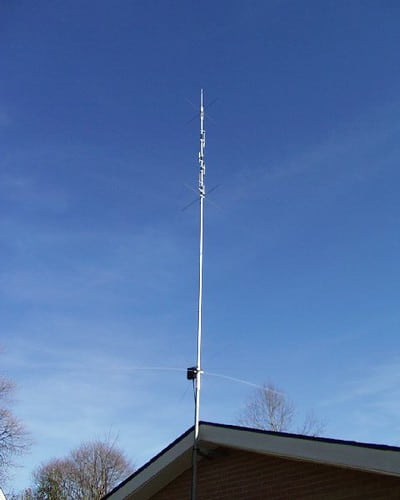
In mobile situations, FM operation still uses vertical antennas. There are special considerations to make when attempting to mount an antenna to a vehicle, whether the mounting device will be magnetic or permanent. HF operation requires larger antennas for mobile use.
A quality feedline, which connects the antenna to the transmitter, is also important. There are different levels of quality in cables, and lower qualities will lose a certain amount of transmitter output and received signals. Because of this, a ham is wise to purchase the feedline with the lowest loss that the budget allows.
Hams also need to use connectors for the ends of their feedlines. Connectors can handle different power levels and some are waterproof, which is great for outdoor connections. Connectors are relatively inexpensive when compared to other equipment; therefore, it is wise to purchase good quality connectors.
Operating a HAM radio
Which Frequencies you Can Just Listen to Other Hams?
It is a good idea to listen to first. Get a simple VHF/UHF FM scanner radio which is not expensive to buy. You can listen on the 2-meter band with a frequency range of 144 to 148 m and 70 cm band from 420 to 450 MHz. With these frequencies, you may hear a lot of traffic and it would be a good start for you.
To receive ham radio over the shortwave (HF) bands, you’ll want to invest in good shortwave radio. To properly receive ham radio voice transmissions over HF, you will need a shortwave radio capable of receiving single sideband (SSB) signals.
The Ethics of Using the Radio
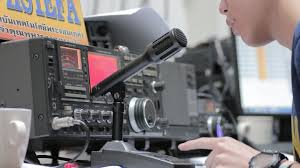
Being a Ham Radio operator comes with big responsibilities. If we are to reap the vast rewards of the hobby we share, adhering to a code of on-air conduct is important.
Perhaps one of the most important lessons to learn is to listen first before talking. Always be polite regardless of the circumstances. Openly praise other hams when you observe them doing something that you feel is especially deserving. Always be ready to quickly and calmly respond to emergencies. Rehearse what you would do if presented with various scenarios.
Develop good operating practices. You will be doing your part in helping ensure the continuance of our long and proud tradition of self-regulation
Limit your conversation to only ham radio related topics. Most hams welcome the opportunity to share and explore other interests. Do not operate when you are in a bad mood. You will be that much more vulnerable to losing your temper. Do not cough, sneeze or clear your throat into your microphone.
Do not be quick to tell others what you feel they are doing wrong. In instances where it may be called for, always be polite and constructive.
Do not ridicule or make fun of other hams – try to have a positive attitude and avoid all the negative talk.
Read the book “Ethics and Operating Procedures for the Radio Amateur“ by John and Mark it is considered a classic on this topic.
Pounding the Brass
Morse code is a way of communicating using only dots and dashes. These can be audio or visual. Morse code was invented by Samuel F. B. Morse in the 1830s.
Look for many online apps that will help you practice Morse code and you’ll be well on your way to becoming proficient in Morse code.
Communicating in Morse Code
Morse code is still widely recognized, even if it is not as widely used as it once was. But Morse code is still used in the aviation industry as many navigational systems such as VOR and NDB still use Morse code. US Coast Guard and Navy use visual signals to communicate in Morse code.
Ham Talk – Learn the Lingo
Well, you may have heard about the Q-signals. These are three-letter codes that are mostly in use when communicating through Morse code. They were originally used by maritime radio operators. It is expected that the Q codes will be heard for many years to come as they are also used by ham operators in voice communications.
Here are some examples of Q code communication:
QRU: Do you have any messages for me?
I have no messages for you.
QRV: Are you ready to receive?
I am ready to receive.
QRZ: Who is calling me?
You are being called by . . .
QTH: What is your location?
My location is . .
Preppers This Is For You
Are you a Prepper or and Survivalist? Then ham radio is your best for communication in an emergency. Most of you already have the right equipment but you have to prepare and practice with it to be ready.
Emergency Preparations
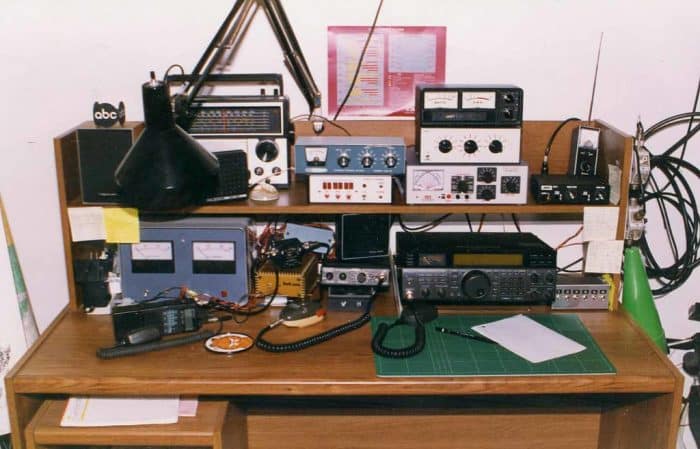
When an emergency strikes, training in handling emergencies should guide you through the process successfully. To be effective in times of emergency, you need to prepare ahead of time.
That way, when an emergency arises, you will know exactly what to do. It’s wise to get to know team leaders and members of local emergency teams and also get to know the call signs of operators of the Emergency Operating Centers (EOC).
This information will greatly help you in communicating with emergency services in your area in case of real emergency situations.
Emergency Operations
In general, in cases of emergency, a ham can begin by monitoring emergency frequencies and follow instructions received from emergency officials over the frequency.
Hams can come in very useful in reporting all types of emergencies, such as fire or traffic accidents. You can use your ham radio to connect with the 911 operator using the autopatch facility.
You can make distress calls using your ham radio. Practice making a distress call by broadcasting the international code for help ‘Mayday’, giving your call sign, location and stating the nature of the emergency.
You should save the frequencies of people you know will be able to help you out. Similarly, you should be ready when you hear someone making a distress call. Note down the relevant information and pass it on to the emergency service provider.
Other Services That Ham Provide
The types of assistance that ham radio operators provide is not limited to just personal emergencies. An important activity practiced by hams is monitoring weather reports especially severe weather warnings. You can connect with NOAA’s Skywarn program or other weather reporting systems such as National Weather Service and provide information to other fellow hams in your area.
Hams even help out in announcing and if needed provide help and support to many public events such as marathons, parades, or other sporting events. You can coordinate with other local ham operators or emergency groups to help with their needs. Hams interested in volunteering should connect with the manager of the radio operations through the group assisting the event.
Having Fun with Ham
Hams enjoy their hobby in many ways. First, of course, is voice communications. This activity alone provides lots of fun and learning but the biggest gain is the number of contacts you make over a period operating as a ham.
These contacts in some cases turn into lifelong friendships over time. These friends are often living closeby but in some cases, they may be continents apart.
Field Day
Every year in June, many ham radio clubs around the world do a contest/exercise to try to reach various ham operators from far and wide. They simulate disaster scenarios and set camps in a field with tents, power generators, antennas, and of course their ham radios. This exercise is not just all fun and games but good practice for a real emergency if it happens.
Fox Hunts
An interesting event is a foxhunt in which members with their directional antennas try to track down and locate a rouge ham operator.
Space Talk
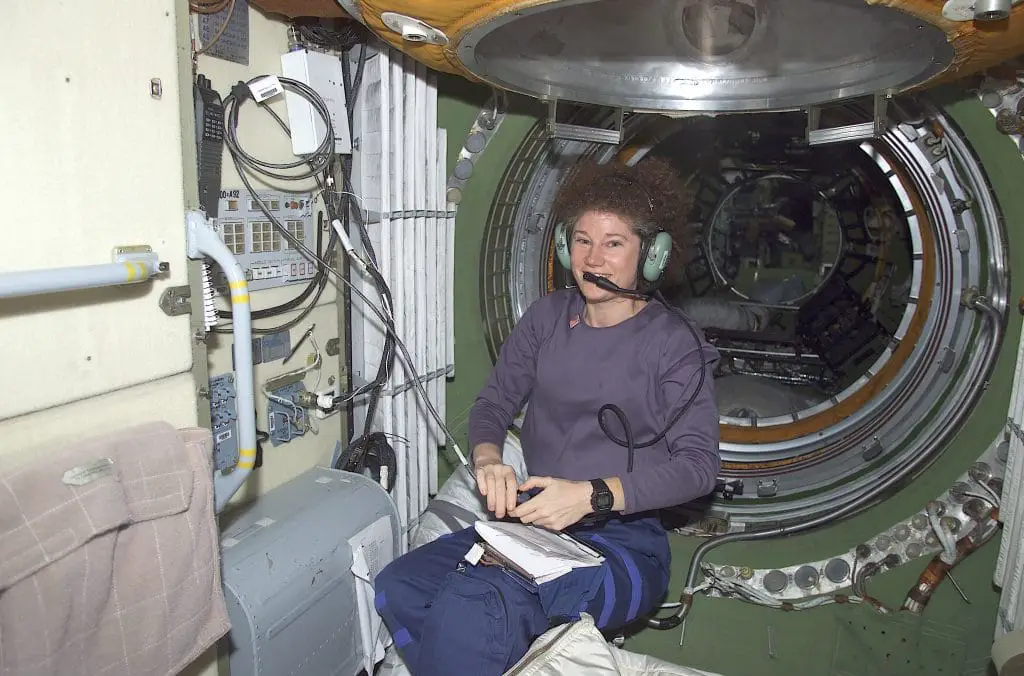
It may come as a surprise to many that hams can communicate with the astronauts of the International Space Station with their radio.
Support Groups
The ham radio community has many people, organizations, and resources ready to help. To make the most of a ham radio hobby, any amateur would benefit from networking with other hams for guidance, exchanging of ideas, and being part of a community
Electronic buffs love to build their transceivers the old way. They love tinkering and soldering and learn all about transistors, diodes, capacitors, transformer, ICs, etc. A useful reason to join a support group is to show off what you’ve made and/or get help from others. Talking about how receivers, transmitters, antennas, power supplies, right down to the component level is fun and enjoyable for the many hams.
Radio Clubs
Many hams belong to at least one radio club, if not more. For beginners, finding a general interest club, or better yet, a club that specifically offers help to newcomers is probably the best way to go.
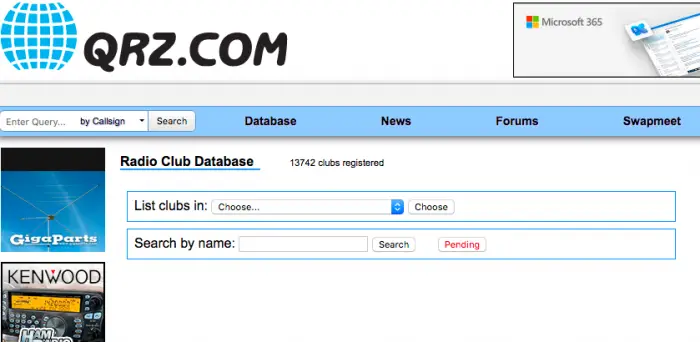
Finding a club is rather easy. The qrz.com website, which features all things ham radio, has a listing of clubs, as does the arrl.org website, which is the website of the American Radio Relay League. Both can provide individuals with listings of types of clubs and where and when they meet. After that, it’s up to the ham to attend a meeting and see if it feels right.
The ARRL
 The oldest continuing ham organization in the world is the American Radio Relay League or the ARRL. The ARRL has been around since before World War I and provides benefits and services to hams in the United States.
The oldest continuing ham organization in the world is the American Radio Relay League or the ARRL. The ARRL has been around since before World War I and provides benefits and services to hams in the United States.
The ARRL also assists hams in taking their licensing exams, updating their licenses, and assisting with acquiring call signs. One of the most important ways that the ARRL helps is by organizing emergency communications through its Amateur Emergency Radio Service (AERS) teams.
Handi-Hams
This organization focuses on the needs of persons with disabilities. They help connect people with disabilities to the resources they need to become successful hams. Information is available at handiham.org.
AMSAT
This organization builds its own satellites and helps coordinate these satellite launches for ham radio. Hams can operate their radios through satellite. Hams interested in the organization or membership can go to the website amsat.org.
Young Ladies’ Radio League (YLRL)
This club was established for ladies who are interested in ham. Their website at ylrl.org provides information on activities, travel opportunities, contests, and award programs to promote women’s interest in ham radio.
Online Opportunities
Just like most other hobbies today, there is a large presence of ham radio operators and information available online. There are opportunities for communicating with other hams, getting help from mentors, and exchanging ideas, all online.
There is a multitude of websites that cater to the needs and interests of hams. Some of the better ones have news, how-to articles, links to email lists, forums, and other resources. Two of the most respected in ham radio are qrz.com and eham.net.
HAMFESTs
Hams gather at Hamfest to meet other hams from around the world and to learn new things. Like ham radio clubs, there are general events as well as those for specific interests. Hamfests are like flea markets. They range in size from small affairs in parking lots to large multi-day events.
Finding and Preparing for Hamfests
In the USA you can find about all the Hamfests happening around the country from the ARRL’s Hamfests and Conventions Calendar. You can access this calendar on their website. The calendar usually lists about 100 Hamfests at a time. Most urban areas have several good-size hamfests every year, some even in the dead of winter.
Ham Radio Conventions
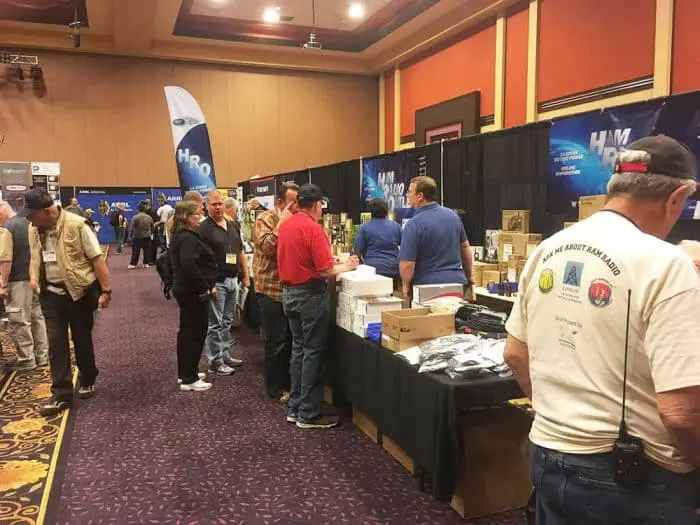
Conventions tend to be more extravagant affairs, held in hotels or conventions centers that are advertised in ham radio magazines as well as online. You can find experts and speakers with whom you talk shop or just socialize.
Whereas Hamfests are like an electronic and radio flea market organized mostly locally, the conventions are a big affair. These are national or even international events in a grand environment, with speeches, talks, seminars, workshops, and even foxhunts. Normally there is a theme of each convention such as emergency preparedness or QRP or DXing.
The two biggest conventions in the USA are the Dayton Hamvention, held in Ohio in mid-May every year, and the Internationale Exhibition for Radio Amateurs, held in Friedrichshafen, Germany. These conventions draw thousands of enthusiasts hams from all over the world.
Final Words
Over time, with the many advances in technology ham radio has grown into a community that spans the globe. The ham radio community is one of the most diverse communities of enthusiasts in the world.
Regardless of age, background, technological ability, or training, there are countless opportunities for ham radio operators to get involved within their community. You may become a ham operator, acquire a license, and enjoy a great hobby. Who knows, one day it might even save your life.



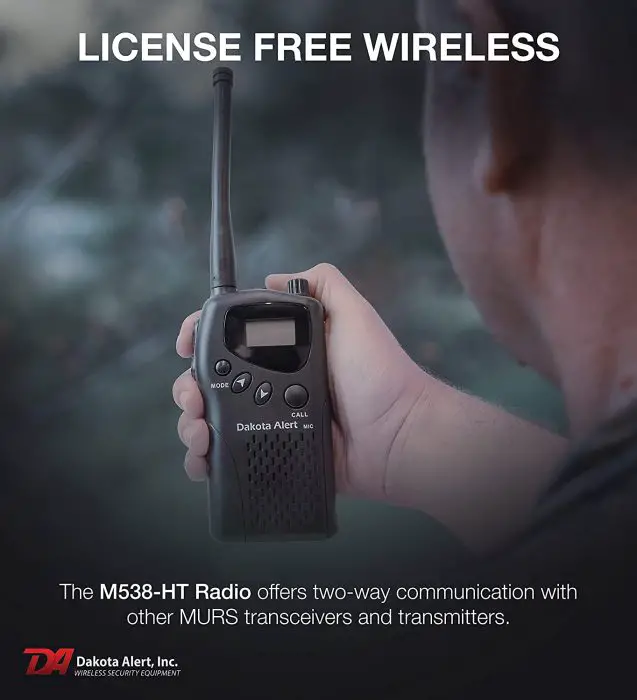
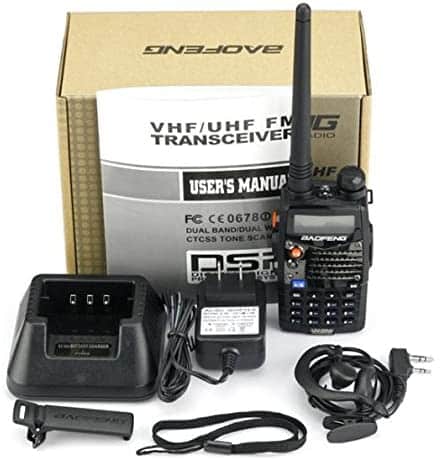



hey,, i am looking for a book on how the ham radio world works. the study books just ask the question, then answers. im looking for more info ON the questions. the only book that i found that comes close is HAM FOR DUMMIES. any info is helpfull thank chris
Absolutely awesome post for n00b hams! Great job hitting all the high points.
Thanks, Gary. Very happy to hear you found it of use!
It’s a bit dated. You mix CB terms with Ham terms, e.g. We don’t use “Beam antenna,” it’s a Yagi (informal) or Yagi-Uda (formal) antenna. We don’t use (need) amplified mics, modern equipment uses the mic that comes with the radio most efficiently. We don’t use straight keys much, Morse code is sent using iambic paddles and electronic keyers these days, and it still is as popular as it’s ever been. Q-codes are really used for HF communications, not so much for FM analogue or digital communications–but that is more regional than a rule-of-thumb.
Really Tobias, “Practise sending a Mayday?!?! Not on the air I hope!! That’s a Federal offense if it is not real and someone misinterprets your paragraph as something a newbie can “practice” on-air! I suggest a little re-writing with that!
Otherwise, fairly accurate and simply written. Kudos.
Great start. I enjoyed the paper. Trust the crustie ham to find something not agreeable, even though that made no difference to the education value of the paper
I found your article honestly among the very best I’ve run across. You’ve answered alot of my questions as someone interested in Ham. Thankyou